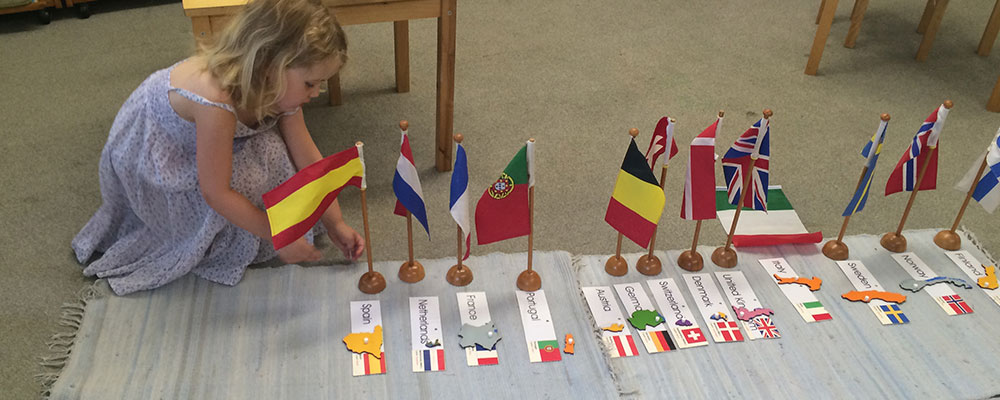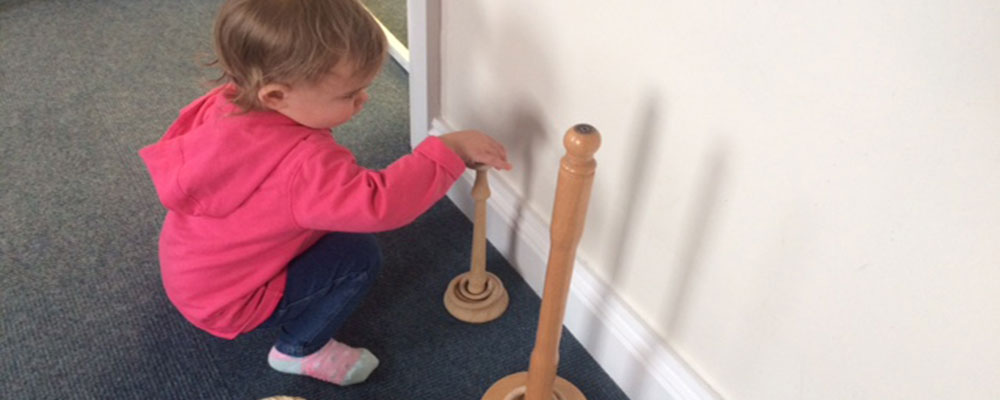The difference between Montessori and traditional pre-schools
There are many differences between Montessori education and the mainstream sector. They differ, from the type of materials found in the classroom to the role of the teacher, the freedom of movement and freedom of choice. The responsibility given to the children and respect for the individuality of the child.
Outlined below are some of the fundamental differences between the teaching methods.
- Purpose of education
- Ungraded classroom or vertical grouping
- Personal choice of learning material and working at individual pace
- Self correcting material
- Freedom of movement
- Self discipline
- The teacher (directress)
Education policy is still based on the premise that the main purpose of education is the transmission of a prescribed curriculum to a prescribed timetable. As a result the children are not given the time to think and get involved in what they are doing. They are constantly rushed from one activity to another.
By contrast Montessori education seeks to nurture the natural development of the child and seek to provide the opportunity for the child to satisfy their inner needs, through exploration, independence and perseverance.
Dr. Montessori believed that the learning should be child driven, as each child is born with innate powers to create and form himself. Our responsibility as adults is not to supplant these developmental powers, but to create a safe and a stimulating environment to satisfy them.
In a well ordered Montessori school, sixteen to twenty six children aged between 2 years to 5 years are together in one classroom. This is not the practice in many traditional preschools, where children are grouped together by age. The Montessori style of grouping is called family or vertical grouping. It is a sound and realistic way of helping social development by approximating more nearly to a family where there are likely to be children of different ages living together.
It permits the younger children a graded series of role models for imitation, and the older ones the opportunity to reinforce their own knowledge by helping the younger ones
It gives wider opportunities for friendship and companionship, which is a sound and realistic way of helping social development.
It helps to ease the disagreements and frustrations that can arise, when children of the same age want the same materials. Therefore conflict within the class is never seen, and it helps the group to exercise social self control, which is more effective and desirable than adult imposed control.
In a secure environment of a well prepared Montessori classroom, children are allowed to spend as much time as they want with any set of didactic materials of their choice, which has been presented to them before by the directress (teacher). They are allowed complete freedom to work through the sequence of these educational materials at their own pace, which gradually progress in difficulty. The children are free to respond to their natural tendency for constructive activity, within a framework of firm limits.
The children’s innate passion for learning is encouraged by giving them opportunities to encourage in spontaneous, purposeful activities with the guidance of a trained adult. The children, through their work develop concentration and joyful self-discipline
In a traditional school, children work to a structured time table and to a specific time stipulated by the teacher.
In a Montessori classroom, teaching materials are designed to make failure and success obvious to a child using them. The children can easily and immediately correct any mistake by changing their actions. Therefore there is no fear of being wrong or failing. The child corrects his own mistake and therefore develops a secure sense of self esteem.
In a traditional classroom the teacher corrects the child’s work.
In a Montessori classroom, children have the freedom of movement. They can sit on the floor or at a table and work. They can walk around and choose from one activity to another. They can choose to work individually, with another child or in a group, anywhere in the classroom, without disturbing the others.
In a traditional classroom the child is assigned a place of his/her own and can only move with the permission of the teacher.
Freedom goes hand in hand with the development of self discipline. Respect for others and the environment. When children are consistently given the opportunity to engage in meaningful activities that meet their deep interests and skills, through their own chosen work, they develop concentration. Then self discipline develops naturally in the child. This is a harmonious development of the will, mind and the body, which is the key to self discipline.
In a traditional school the teacher acts as the primary enforcer of discipline.
The function of the teacher in a Montessori classroom differs considerably, from that of a teacher in a traditional classroom, hence Dr. Montessori used the term ‘Directress’. In a traditional classroom the teacher is the centre of attention and the children have to follow the teacher. In a Montessori classroom the teacher follows the child. In other words she/he observers the child and is guided by the child’s needs. As a result the teacher knows when to be active and when to be passive.
In the Montessori classroom both the child and the teacher are free of each other. This does not mean that the teacher sits back, and allow the child to do just as he/she pleases. What it means is that the pupil depends upon and uses the teacher when he/she wants. The teacher then demonstrates the correct use of the materials chosen by the child, and carefully observes the progress.
The true Montessori teacher steps back from the so called traditional role of teaching, which is often pontifical or pedantic. She/he allows the child the freedom to satisfy his inner needs, through the self chosen activities.
Therefore a Montessori teacher’s daily plan proceeds from her observations of the child, rather than a prepared curriculum that has to function to a time table prepared by a teacher in a traditional classroom.





